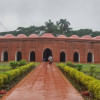Unesco visit
The recent visit of a joint Reactive Monitoring Mission involving the UNESCO World Heritage Centre and the International Union for the Conservation of Nature (IUCN) raises more questions than answers. The mission that was supposed to focus on factors threatening the Outstanding Universal Value of the Sundarbans, and the planned development of a coal-fired thermal power plant in the immediate vicinity of the world's largest mangrove forest, left without meeting social movement groups including The National Committee to Protect Sundarbans, which was already approved by the government.
No one seems to know why. And activists and experts who have long been working for the protection of the forest are asking if the report prepared by the Unesco team would be accurate based only on the official narrative. Why was the mission allegedly not allowed to meet environmentalists and activists? What is the government trying to hide?
The 1,320 MW Rampal coal plant will sit within 14 km of the Sundarbans, a Unesco World Heritage and activists fear that the coal plants will slowly destroy the site - already under threat from forest fragmentation and overpopulation - due to air and water pollution, changes in water quality and increased traffic. The Rampal plant alone will take more than two hundred thousand cubic metres of water every day from the Passur River, potentially changing the salinity and temperature of the water on which mangroves depend.
The government has an obligation to act in a more transparent and accountable manner, listening to all sides and considering all factors before going ahead with this project. We definitely want more power for industry and growth but not at the cost of our environment. Power plants are replaceable; a forest like the Sundarbans is not.

 For all latest news, follow The Daily Star's Google News channel.
For all latest news, follow The Daily Star's Google News channel. 








Comments